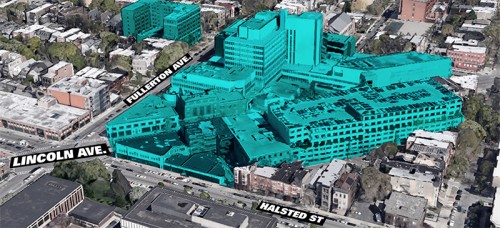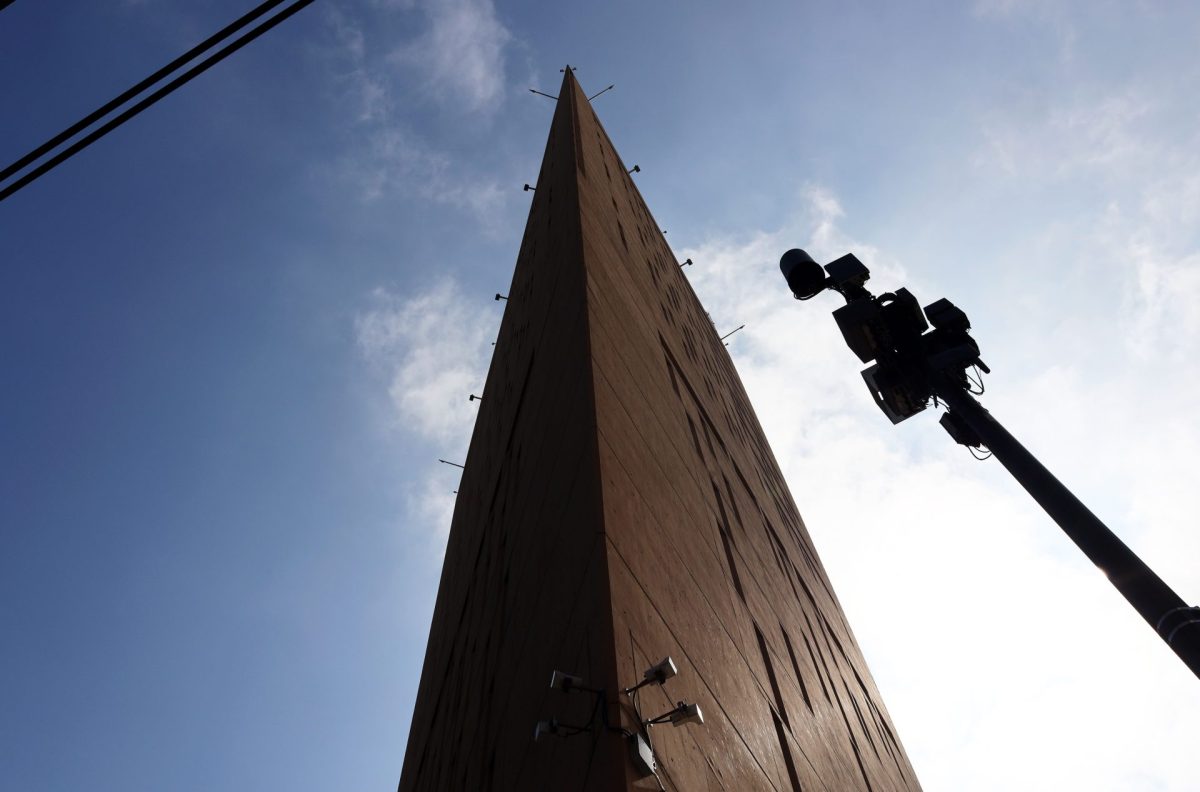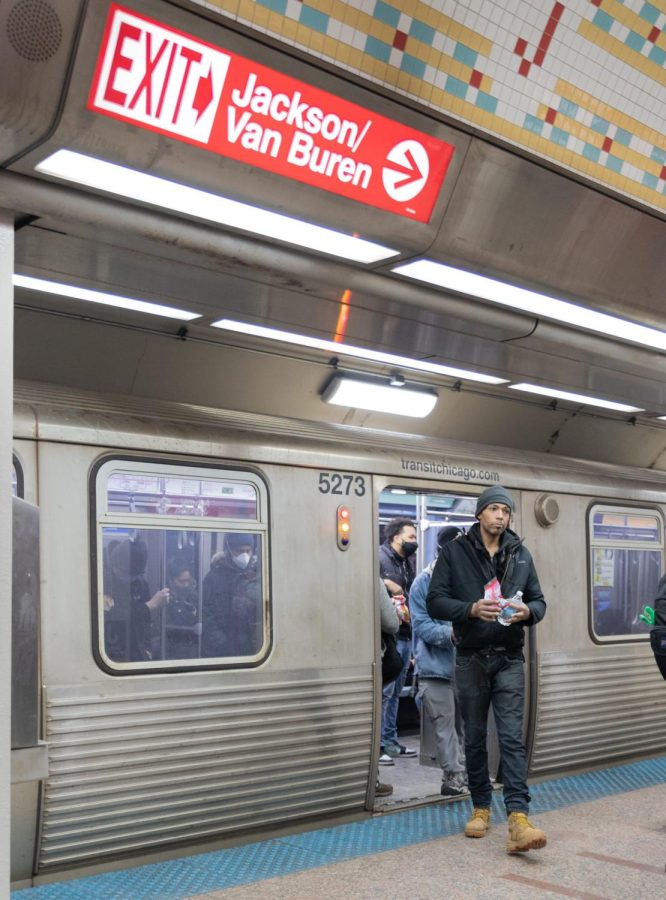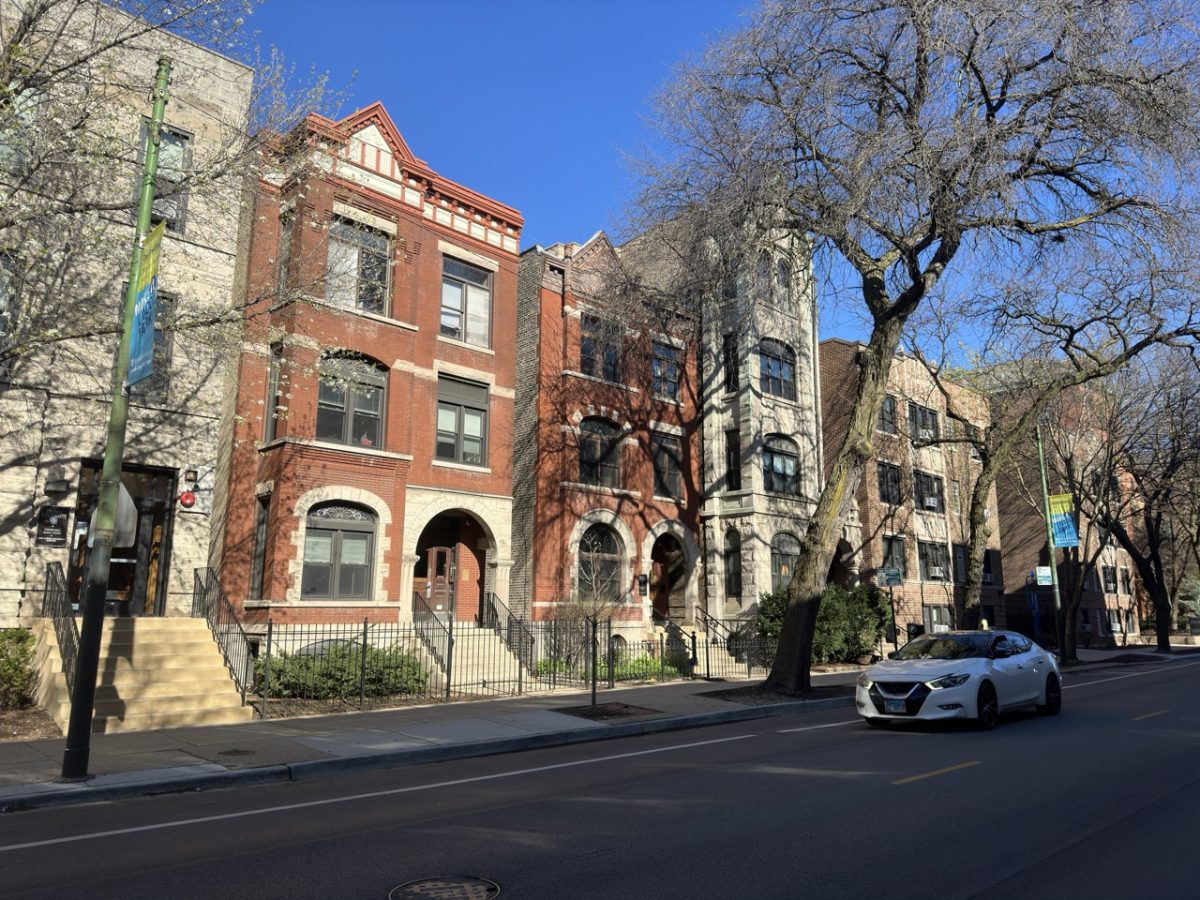
A lawsuit that blocked the redevelopment of the former Children’s Memorial Hospital site in Lincoln Park has been dismissed after months of arguing, clearing the way for construction to start on the long-vacant site.
Neighborhood organizations, including the Park West Community Organization and Mid-North Association, filed the lawsuit last June, arguing over the decision to rezone and the potential negative affects on the community.
Norm Wolfe, a Lincoln Park resident on Burling Street and a member of the Park West Community Organization, does not see major benefits to the community from building the new hospital at 200 feet. Wolfe explained how people moved to that neighborhood with the desire to live in a high rise and the new high rise, “tears at the very fabric of the neighborhood.” Wolfe and the opposing neighbors are not opposed to reasonable development.
“We have a mix of residential and commercial development. We rely on those retail quarters for our shopping, but we think that what they are planning for this development is too much for the neighborhood,” Wolfe said.
The new site will include a loading dock for the proposed 1,500 feet of retail space and 100 parking spaces with an entrance and exit on Fullerton Avenue.
“At DePaul you know that traffic is impossible on Fullerton, especially in the summer time. This is only going to make it worse,” Wolfe said.
Park West Community Organization and Mid-North Association backed up their case with the purpose of zoning.
“The purpose of zoning is to maintain consistency and character in the area and that is the main reason we challenged the case in a court of law,” Wolfe said.
Wolfe said DePaul has succeeded in mixing commercial and residential development.
“I think the way DePaul was built along Fullerton looks respectful of the neighborhood it was built in, over here is just not that way; I wish it looked more like DePaul” he said.
Opposing parties like Ald. Michele Smith (43rd Ward) and six-year Starbucks employee Katie Wright said that the development of the hospital will bring revenue to the community and neighboring businesses. The Starbucks Wright works at is directly across from the Children’s Memorial site.
“When the hospital closed, my business in dollars went down about 35 percent,” Wright said.
Since the hospital closed down two years ago, Wright’s business has slowly been getting back to normal. “I have made up about 15 percent from when the hospital closed, but I am looking forward to the new business I will get from the development of the site,” she said.
Wolfe seems to disagree with the affect the hospital has on neighboring businesses.
“I have lived in the area for 28 years and Lincoln has consistently been a problem area of businesses coming and going. I would expect the retail space of the new location to have its own coffee shop, and food. My guess is they are going to be competing with existing businesses,” he said.
Zoning is a process that is practiced widely in Chicago. Department Chair of Geography at DePaul Euan Hague said zoning is, “ a process that puts in place a set of guidelines and regulations in development.”.
“The public is allowed to weigh in on the process in meetings, and the alderman votes on whether or not to go through it,” he said.
When developing a piece of property, one must abide by zoning laws, but it is possible to request a zoning change.
“Zoning tells you what can be built on the site, the idea is to not have a slaughter house next to an apartment building,” Hague said. “It is to organize a city’s land.”
The zoning laws in the area of the site cap the buildings at 65 feet, but the rezoning of the land allows the new building to be 200 feet high.
“It is significantly higher, but personally given that site and where it is, I am not surprised. I think the city drags high end development further North and the children’s hospital has the high power in the relatively wealthy neighborhood,” Hague said.
Inconsistency in height and scale of the surrounding neighborhood has been an opposing argument but Hague said that, “aesthetics have nothing to do with it. Zoning is about how the land is used and what is built on the site. If the City Council agrees on 200 feet high it does not have to be pretty.” Zoning is an important part of urban planning, especially in Chicago; and Hague said, “It is the best system we have, but it is a system that is open to change.”














Boyee • Jan 15, 2015 at 1:42 am
If the former site of Children’s Memorial is no longer being used for a hospital purpose, it should have to respect the same zoning that those in the immediate vicinity have to follow. There should also be a study on how much retail the surrounding neighborhood cans support and also realize that having truck deliveries on Fullerton Avenue is only going to make the bad traffic situation worse. They could have stayed within the surrounding zoning with 4-5 7 story buildings and respected the surrounding neighborhood. But Alderman Michele Smith very much flip flopped on what she said she supported during her election campaign. I don’t see her winning re-election.
Fran Johns • Feb 8, 2015 at 2:27 pm
This site has been problematic for the surrounding Lincoln Park neighborhood ever since CMH refused to move to Northwestern’s near north campus in the 1980s. At that time, the neighborhood associations were characterized as representing people who were more interested in property values than in sick children, as the hospital struggled to keep its autonomy and avoid merging with Northwestern with claims of serving the community.
The hospital, with tens of millions in endowment at the time and corporate and political clout naturally prevailed, buying up property in the neighborhood and installing a helicopter landing pad on the roof of the expanded hospital, all the while serving critically ill children who came from all over the country.
40 years later, when Ann Lurie insisted CMH move to Northwestern, the neighbors will once again be characterized by political and business interests as anti-progress and parochial as the site is developed by a company whose owner is among the 100 most powerful people in Chicago. Too bad, but the community will lose this battle just as we lost the last one. And you can see the long-term results of that loss.